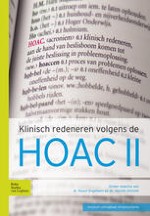2010 | OriginalPaper | Hoofdstuk
5 Schouderklachten bij een volleybalster
Auteurs : Norman D’hondt, Maarten van der List
Gepubliceerd in: Klinisch redeneren volgens de HOAC II
Uitgeverij: Bohn Stafleu van Loghum
2010 | OriginalPaper | Hoofdstuk
Auteurs : Norman D’hondt, Maarten van der List
Gepubliceerd in: Klinisch redeneren volgens de HOAC II
Uitgeverij: Bohn Stafleu van Loghum
Print ISBN: 978-90-313-7727-5
Elektronisch ISBN: 978-90-313-7728-2
Copyright: 2010
